While attending ACT Expo in Dallas, TX last week, one of the major topics of personal conversation with other show attendees was the stability of alternative fuel savings in a market where diesel prices are lower than recent historical averages. I was armed with two things in the face of such questions…diesel’s long-term historical data and numbers! I love historical data only because trends in diesel prices over a 20-year average tend to look a little like the ascending side of a large mountain range. As for being armed with numbers…well, numbers don’t lie!
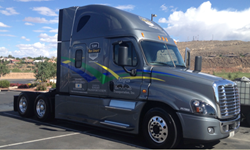 My previous truck was the flagship of fuel economy, but it just so happens that I am not in the most fuel efficient line of work running locally around Southern California daily and occasionally through the mountain passes to and from Las Vegas. Vegas is well known for the consumption of “beverages”, so I typically find myself hauling a lot of that, which definitely doesn’t lend itself to having a light load in the box! Even with the diesel-powered Cascadia I was piloting before, I was still lucky to get an average of 6.5mpg on a good day of local stop-and-go city work. I became curious as to just how much fuel I may be saving now that diesel has come down, after mentioning in a previous blog that CNG has maintained a relatively level pricing structure during the lowering of diesel prices over the most recent several months. Furthermore, I wanted to use the figures of what I did in my other truck to compare it fairly, given the same operating range and same average workload on the engine.
My previous truck was the flagship of fuel economy, but it just so happens that I am not in the most fuel efficient line of work running locally around Southern California daily and occasionally through the mountain passes to and from Las Vegas. Vegas is well known for the consumption of “beverages”, so I typically find myself hauling a lot of that, which definitely doesn’t lend itself to having a light load in the box! Even with the diesel-powered Cascadia I was piloting before, I was still lucky to get an average of 6.5mpg on a good day of local stop-and-go city work. I became curious as to just how much fuel I may be saving now that diesel has come down, after mentioning in a previous blog that CNG has maintained a relatively level pricing structure during the lowering of diesel prices over the most recent several months. Furthermore, I wanted to use the figures of what I did in my other truck to compare it fairly, given the same operating range and same average workload on the engine.
Being that I operated just a hair shy of 50,000 miles for the most recent year, I based my comparison on that figure while averaging 6.5mpg on diesel (past truck’s average for the timeframe I drove it) and 5.62mpg for CNG (current real-time average). There is also an average 12-month diesel price taken directly from eia.gov for California, as well as the real 12-month average price I paid for CNG over the past year. The timeframe used for comparison pricing was the same (4/1/15-3/31/15) to reflect the dip in diesel during the same time in which I was operating a CNG-powered Cascadia.
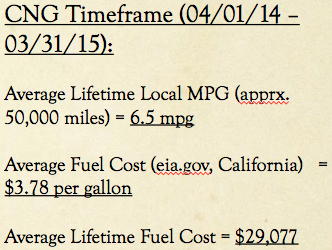
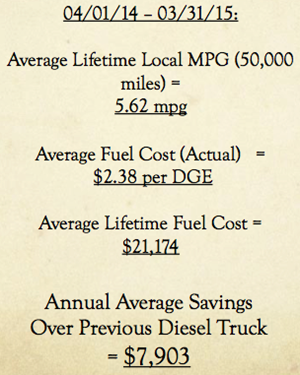
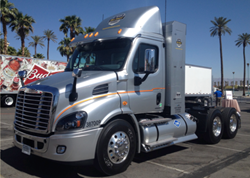 As you can see, the average savings of CNG is still a significant one. A rule I like to use in the CNG equation for folks doing research into whether it’ll work for their particular operation or not, is to remind them that the harder you run it, the quicker it’ll pay for itself. It is no secret that there is an additional cost for choosing a CNG-powered truck, but how fast you can recover that upcharge depends largely on how much you plan to run that truck. After that first initial cost is paid for, the savings are largely saved directly off of the bottom line. Being that I run half the miles of your typical over-the-road driver, you could expect to see higher
As you can see, the average savings of CNG is still a significant one. A rule I like to use in the CNG equation for folks doing research into whether it’ll work for their particular operation or not, is to remind them that the harder you run it, the quicker it’ll pay for itself. It is no secret that there is an additional cost for choosing a CNG-powered truck, but how fast you can recover that upcharge depends largely on how much you plan to run that truck. After that first initial cost is paid for, the savings are largely saved directly off of the bottom line. Being that I run half the miles of your typical over-the-road driver, you could expect to see higher 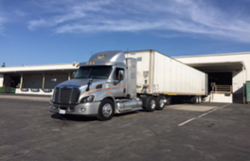 savings if you run more, or even double-shift the truck if running locally. Even as little as I run, the extra $7,900 or so I have seen in savings is a welcome sight, in spite of the recent dip in diesel prices. Though the margins of savings were thinned by this diesel dip, it is not seeming as though it is going to be a long-lived change, as diesel prices are already staring to see a small but steady climb back up from the bottom. As history has taught us with diesel…the only thing that is certain in it’s pricing, is that price will increase if given enough time!
savings if you run more, or even double-shift the truck if running locally. Even as little as I run, the extra $7,900 or so I have seen in savings is a welcome sight, in spite of the recent dip in diesel prices. Though the margins of savings were thinned by this diesel dip, it is not seeming as though it is going to be a long-lived change, as diesel prices are already staring to see a small but steady climb back up from the bottom. As history has taught us with diesel…the only thing that is certain in it’s pricing, is that price will increase if given enough time!